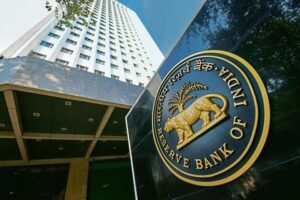 Based on the recommendations of the Committee on Currency Movement (CCM), the Reserve Bank have directed banks to ensure their ATMs are grouted to a wall, pillar, or floor by September-end, except those installed in high secured premises such as airports, to enhance security of the cash vending machines. The committee to review the entire gamut of security of treasure in transit is chaired by Shri D.K. Mohanty. Based on the recommendations of the Committee on Currency Movement (CCM), the Reserve Bank have directed banks to ensure their ATMs are grouted to a wall, pillar, or floor by September-end, except those installed in high secured premises such as airports, to enhance security of the cash vending machines. The committee to review the entire gamut of security of treasure in transit is chaired by Shri D.K. Mohanty. |
| Source: Economic times |
 The RBI has slapped a penalty of Rs. 2 crores on Kotak Mahindra Bank for the non-state lender’s failure to adhere to the regulator’s diktat on promoter shareholding. The central bank has been engaged in a dispute with Kotak Mahindra since 2014 over its failure to meet the milestone for stake reduction by Uday Kotak, the billionaire promoter of the bank. The RBI has slapped a penalty of Rs. 2 crores on Kotak Mahindra Bank for the non-state lender’s failure to adhere to the regulator’s diktat on promoter shareholding. The central bank has been engaged in a dispute with Kotak Mahindra since 2014 over its failure to meet the milestone for stake reduction by Uday Kotak, the billionaire promoter of the bank. |
| Source-The Economic Times |
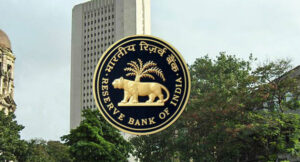 Financial Literacy Week 2019 to be observed from June 3-7 on the theme of “Farmers” and how they benefit by being a part of the formal banking system. Financial Literacy Week is an initiative of RBI to promote awareness of key topics every year through a focused campaign. Growth in agriculture is necessary for the overall economic growth and finance is an essential enabler for the same. RBI is actively involved in formulating policies that enhance the flow of credit to the farming community. Financial Literacy Week 2019 to be observed from June 3-7 on the theme of “Farmers” and how they benefit by being a part of the formal banking system. Financial Literacy Week is an initiative of RBI to promote awareness of key topics every year through a focused campaign. Growth in agriculture is necessary for the overall economic growth and finance is an essential enabler for the same. RBI is actively involved in formulating policies that enhance the flow of credit to the farming community. |
| Source- Business Standard |
 Corporation Bank has launched ‘Corp SME Suvidha’, a product for GST-registered MSMEs. The product has been designed as part of the bank’s efforts to provide the best products to the MSME sector. PV Bharathi, Managing Director and Chief Executive Officer of the Corporation bank,launched the product in Mangaluru recently. Corporation Bank has launched ‘Corp SME Suvidha’, a product for GST-registered MSMEs. The product has been designed as part of the bank’s efforts to provide the best products to the MSME sector. PV Bharathi, Managing Director and Chief Executive Officer of the Corporation bank,launched the product in Mangaluru recently. |
| Source- The Hindu Business Line |
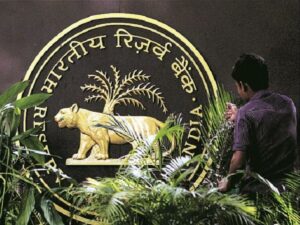 RBI stated that all non-deposit-taking non-banking financial companies (NBFCs) with an asset size of Rs 5,000 crore and above, and all deposit-taking NBFCs irrespective of their asset size, have to maintain a liquidity buffer in terms of a Liquidity Coverage Ratio (LCR). In a draft on liquidity risk management framework for NBFCs and core investment companies, these measures will promote resilience of NBFCs to potential liquidity disruptions by ensuring they have sufficient High-Quality Liquid Asset (HQLA) to survive an acute liquidity stress scenario lasting for 30 days. The banking regulator proposed that it will implement LCR through a glide path from 01st April 2020 to 01st April 2024. RBI stated that all non-deposit-taking non-banking financial companies (NBFCs) with an asset size of Rs 5,000 crore and above, and all deposit-taking NBFCs irrespective of their asset size, have to maintain a liquidity buffer in terms of a Liquidity Coverage Ratio (LCR). In a draft on liquidity risk management framework for NBFCs and core investment companies, these measures will promote resilience of NBFCs to potential liquidity disruptions by ensuring they have sufficient High-Quality Liquid Asset (HQLA) to survive an acute liquidity stress scenario lasting for 30 days. The banking regulator proposed that it will implement LCR through a glide path from 01st April 2020 to 01st April 2024. |
| Source- Money Control |
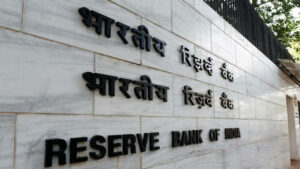 The Reserve Bank of India has announced that it will allow large modern currency chests to increase the service charges on cash deposited by non-chest bank branches from the existing rate of Rs5 per packet of 100 pieces to a higher rate subject to a maximum of Rs8 per packet. For this, only a currency chest (CC) that fulfils the minimum standards will be eligible to be classified as a large modern CC. The increased rates can be charged only after such classification by the issue office concerned. The Reserve Bank of India has announced that it will allow large modern currency chests to increase the service charges on cash deposited by non-chest bank branches from the existing rate of Rs5 per packet of 100 pieces to a higher rate subject to a maximum of Rs8 per packet. For this, only a currency chest (CC) that fulfils the minimum standards will be eligible to be classified as a large modern CC. The increased rates can be charged only after such classification by the issue office concerned. |
| Source- The Hindu Business Line |
 The HDFC group has overtaken the 151-year-old Tata group to emerge as India’s most valuable by way of market capitalization (m-cap). The combined market value of the five listed companies of the HDFC group – HDFC, HDFC Bank, HDFC Life, HDFC Asset Management and Gruh Finance stood at Rs 11.66 lakh crore while the combined m-cap of 29 Tata group companies stood at Rs 11.64 lakh crore, about Rs 2,000 crore less than that of the HDFC group. The HDFC group has overtaken the 151-year-old Tata group to emerge as India’s most valuable by way of market capitalization (m-cap). The combined market value of the five listed companies of the HDFC group – HDFC, HDFC Bank, HDFC Life, HDFC Asset Management and Gruh Finance stood at Rs 11.66 lakh crore while the combined m-cap of 29 Tata group companies stood at Rs 11.64 lakh crore, about Rs 2,000 crore less than that of the HDFC group. |
| Source- Times Now |
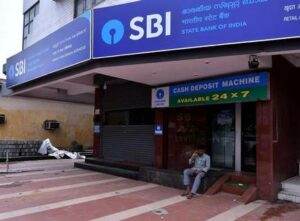 The State Bank of India (SBI) has announced a strategic partnership with the FMCG arm of The Art of Living – Sri Sri Tattva. Under this partnership, YONO users can avail a discount of 15% on the entire range of products offered by Sri Sri Tattva such as food, personal care, healthcare, homecare, BYOGI apparels and Shankara skincare products. The State Bank of India (SBI) has announced a strategic partnership with the FMCG arm of The Art of Living – Sri Sri Tattva. Under this partnership, YONO users can avail a discount of 15% on the entire range of products offered by Sri Sri Tattva such as food, personal care, healthcare, homecare, BYOGI apparels and Shankara skincare products. |
| Source- The Hindu Business Line |
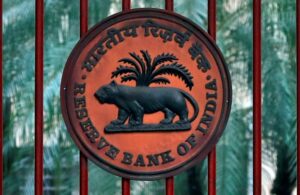 Reserve Bank of India has released a vision document ‘Payment and Settlement Systems in India: Vision 2019 – 2021’, with its core theme of ‘Empowering Exceptional E-payment Experience’ for ensuring a safe, secure, convenient, quick and affordable e-payment system. The move comes as the apex bank expects the number of digital transactions to increase more than four times to 8,707 crores in December 2021. It envisages achieving “a highly digital and cash-lite society” through the goal posts of competition, cost-effectiveness, convenience and confidence (4Cs). Reserve Bank of India has released a vision document ‘Payment and Settlement Systems in India: Vision 2019 – 2021’, with its core theme of ‘Empowering Exceptional E-payment Experience’ for ensuring a safe, secure, convenient, quick and affordable e-payment system. The move comes as the apex bank expects the number of digital transactions to increase more than four times to 8,707 crores in December 2021. It envisages achieving “a highly digital and cash-lite society” through the goal posts of competition, cost-effectiveness, convenience and confidence (4Cs). |
| Source- RBI |
 To give a fillip to digital lending, Small Industries Development Bank of India (SIDBI)has put together a pilot scheme to extend financial assistance of up to Rs10 crore to new-age fintech non-banking finance companies (NBFCs) engaged in financing small businesses and other income-generating activities. SIDBI has set the exposure cap for lending to a single new-age fintech NBFC at 30% of NOF of the new-age fintech NBFC, subject to maximum cap of Rs10 crore. As per the scheme, new-age fintech NBFCs should hold in trust the underlying securities/ receivables on behalf of SIDBI. To give a fillip to digital lending, Small Industries Development Bank of India (SIDBI)has put together a pilot scheme to extend financial assistance of up to Rs10 crore to new-age fintech non-banking finance companies (NBFCs) engaged in financing small businesses and other income-generating activities. SIDBI has set the exposure cap for lending to a single new-age fintech NBFC at 30% of NOF of the new-age fintech NBFC, subject to maximum cap of Rs10 crore. As per the scheme, new-age fintech NBFCs should hold in trust the underlying securities/ receivables on behalf of SIDBI. |
| What are Fintech NBFCs? Fintech NBFCs are digital loan companies. They leverage information technology to provide fast and convenient access to funding. To be eligible for funding assistance, Reserve Bank of India-registered new-age fintech NBFCs have to meet prescribed parameters, including minimum capital risk-weighted assets ratio of 15%; non-performing assets less than or equal to 4%; minimum net-owned fund (NOF) of Rs20 crore and minimum asset size of Rs50 crore; and at least two audited annual reports, positive net worth and leverage ratio within 5:1. |
| Source- The Hindu Business Line |
You need to login to perform this action.
You will be redirected in
3 sec
